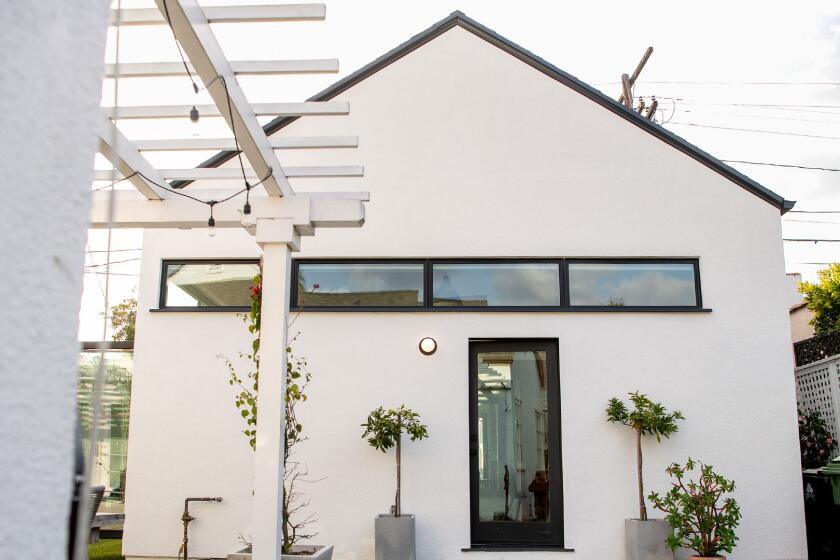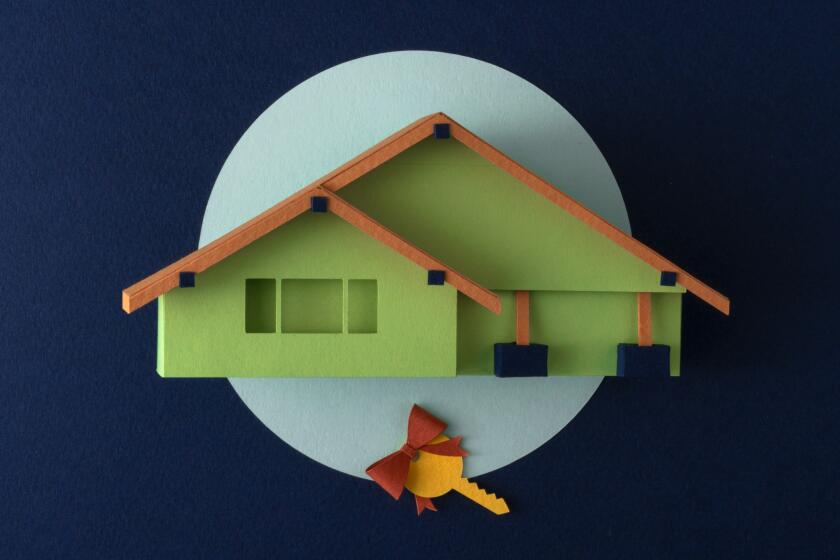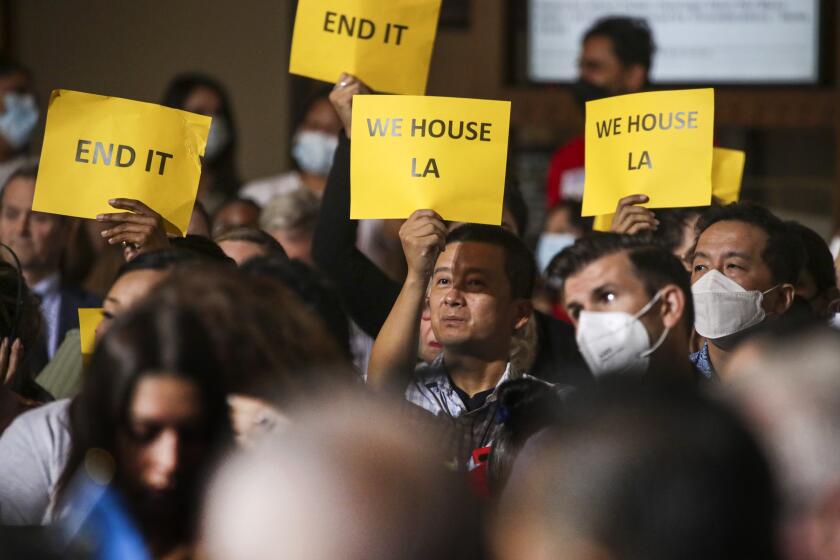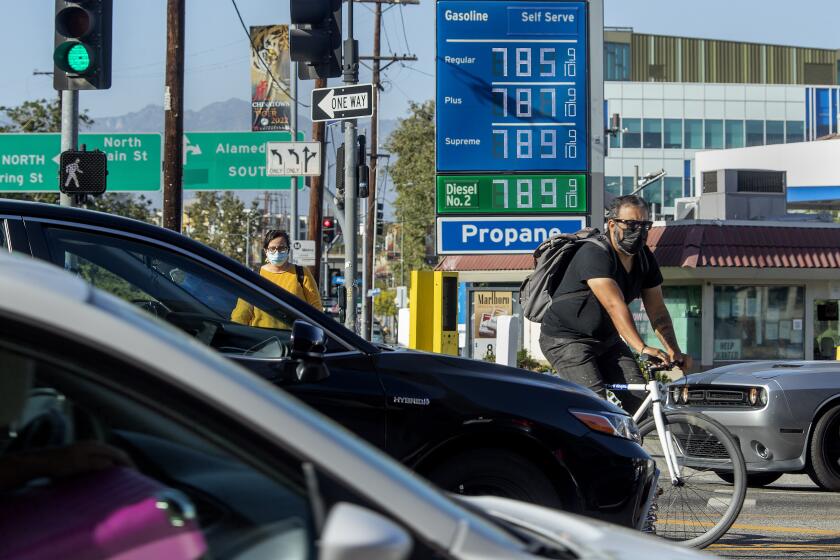Want a speed hump to deter speeders on your L.A. street? You have to act fast
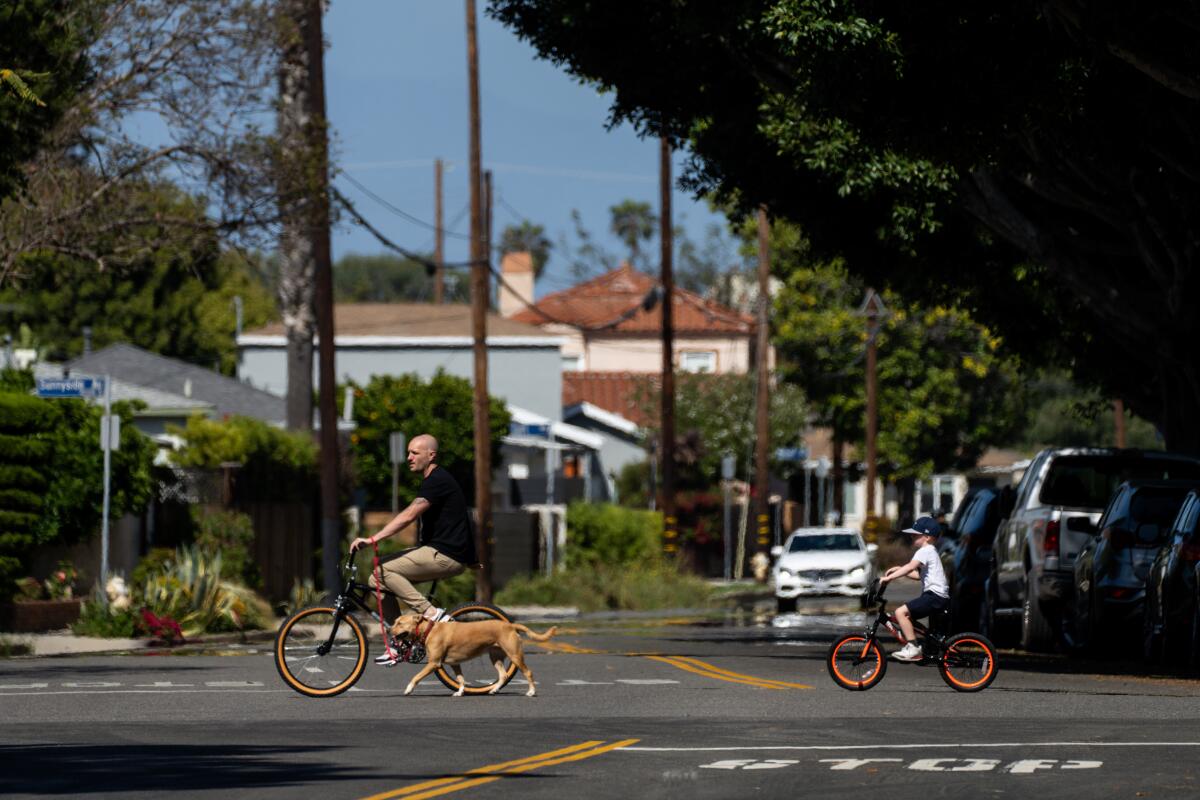
Sick of seeing cars zooming down your quiet residential avenue? Worried about the schoolkids crossing without the help of a light or a stop sign? Now’s your chance to do something about it, if you live in the city of Los Angeles.
Starting at 9 a.m. Thursday, the city will open the application window for speed humps, the low and wide version of the familiar parking-lot axle-bouncers. The Los Angeles Department of Transportation says it will accept just 25 applications from each of the 15 City Council districts before closing the window, so the sooner you apply, the better your chances will be.
In addition, DOT spokesman Colin Sweeney said, the agency probably won’t have enough money to build all those new mounds of forced deceleration, which cost $11,000 to $67,000 per installation. That means some qualified applicants may have to try again next year, when the DOT accepts a new round of proposals.
On the plus side, there’s no cost to apply, and the city (or more precisely, its taxpayers) will pick up the full tab for the street humps.
Applying for speed humps is an act of self-sacrifice — or possibly self-loathing — because if you’re successful, you and your neighbors will have to drive over the things far more often than anyone else will. The asphalt mounds also slow down emergency vehicles, which is why the Federal Highway Administration says that installation of these and other “traffic calming” methods “should be coordinated with the fire department to comply with local interpretations and requirements of the fire code standards.”
In fact, under Los Angeles County ordinances, “Traffic calming devices, including but not limited to, speed bumps and speed humps, shall be prohibited unless approved by the fire code official.”
When it comes to lightening leadfoots, though, speed humps are considerably more effective than the occasional appearance of a patrol car or motorcycle cop. Let’s face it, people speed so frequently because they’re caught so rarely.
More than 800 speed humps were installed across L.A. neighborhoods between 2017 and 2020, according to the DOT. The program was halted due to the COVID-19 pandemic.
If speed humps are the answer to your safety prayers, you’ll need to download an application from the DOT website (again, starting Thursday at 9 a.m.) to get the process started. But be forewarned, there are a lot of boxes to check. The following information comes from the guidelines and fact sheet posted on the department’s website.
California homeowners have the right to build at least two ADUs on their property. But naturally, there are rules and costs. Here’s a guide.
What, exactly, are we talking about here?
A speed hump is, as the name suggests, a hump in the pavement, typically made of asphalt. The ones laid out by the LADOT are about 2½ inches high and 12 feet to 22 feet across.
Unlike narrow speed bumps, which are designed for parking lots where cars are supposed to be traveling no more than 15 mph, speed humps are designed for vehicles traveling at street speeds. But not highway speeds! Going over a speed hump at 60 mph wouldn’t be as damaging as going like a demon over a speed bump, but it wouldn’t be good.
The payoff, though, is in safety. Researchers have found that speed humps meaningfully reduce speeds and create a safer traffic environment for children.
Who can apply?
Any resident can apply for a speed hump on his or her street, but it pays to be the early bird.
The city will accept only one application per street segment — that is, the stretch of roadway from one stop sign or traffic light to the next. The first applicant will be designated the block representative, who will then have to round up enough support in the neighborhood to pass muster with the DOT. (More on that later.)
Buying a home for the first time is one of life’s sweet milestones.
What street segments are eligible?
To qualify for speed humps, a segment must have a speed limit no higher than 30 mph. It should have only one traffic lane in each direction and a steady diet of speeders; at least 85% of the traffic must travel more than 5 mph above the limit. And it needs to see a fair amount of traffic, but not too much — at least 900 vehicles a day, but typically no more than 10,000.
Applications should be for a segment at least 600 feet long that can accommodate two speed humps, but no longer than 1,300 feet.
Steep hills are a no-go; the maximum grade is 8%. Similarly, sharp curves are disqualifying because drivers have to be able to see a speed hump from at least 150 feet away. Bad drainage is a deal-killer too, as are drains in the center of the road (which rules out alleyways).
Other restrictions include no humps next to hospitals, fire stations or police stations; in front of driveways or commercial buildings; over entrances to sewers; or in spots that prevent catch basins or storm drains from working properly. Nor should there be humps on designated truck or bus routes.
Come Feb. 1, Los Angeles landlords will again be able to evict tenants who are behind on their rent, the City Council decided.
What about the neighbors?
Although it takes only one person to apply, winning a set of speed humps will require significantly more support from the people who live along the segment in question. After all, those are the folks who’ll have to drive over the things every day.
Here’s how the process works. Once the DOT finds that an initial application meets the minimum criteria for speed humps, it will give the block representative a “Request to Study” form. The representative will then have to gather signatures supporting humps either from 10 people living on the segment or from half of the addresses there, whichever is fewer.
Once the signatures are submitted, the agency will study the segment to see if speed humps are feasible. If so — and if there’s any money left in the speed hump pot — the DOT will ask the block representative to pass one last test: persuading at least two-thirds of the residents on the segment to sign off on the project.
The $9.5-billion California tax refund program will provide one-time payments of up to $1,050 for some families.
Are there drawbacks?
You mean, besides having to drive over them all the time? The DOT cites two: Road noise could get worse, because the sound of a vehicle going over a speed hump is considerably louder than a vehicle going over smooth pavement; and the humps will probably be right in front of somebody’s property, as will the signs warning people about the obstructions.
Times staff writer Melissa Hernandez contributed to this report.
About The Times Utility Journalism Team
This article is from The Times’ Utility Journalism Team. Our mission is to be essential to the lives of Southern Californians by publishing information that solves problems, answers questions and helps with decision making. We serve audiences in and around Los Angeles — including current Times subscribers and diverse communities that haven’t historically had their needs met by our coverage.
How can we be useful to you and your community? Email utility (at) latimes.com or one of our journalists: Jon Healey, Ada Tseng, Jessica Roy and Karen Garcia.
More to Read
Sign up for Essential California
The most important California stories and recommendations in your inbox every morning.
You may occasionally receive promotional content from the Los Angeles Times.
